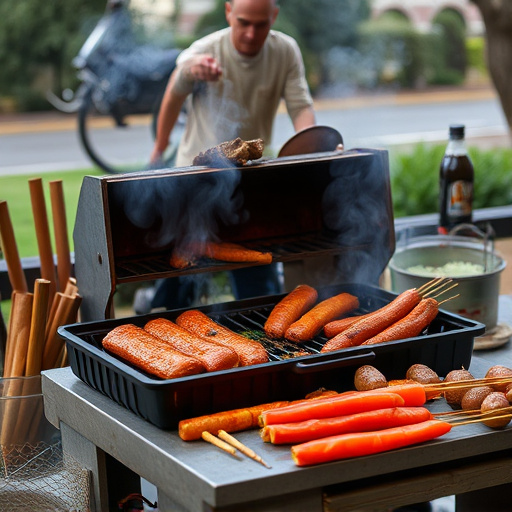Choosing the right BBQ pork ribs cut (baby back or spare) and employing techniques like dry brining and slow cooking ensures tender, juicy results. Sauces add flavor variety, while grilling and resting times perfect the dish. These steps create an exceptional BBQ pork ribs recipe.
Uncover the secrets to achieving tender, mouthwatering BBQ pork ribs—a classic comfort food favorite. This comprehensive guide takes you on a journey from choosing the right cut for maximum tenderness to mastering the art of dry brining for enhanced flavors. Learn the magic of slow cooking and discover how sauces can elevate your ribs to new heights. Finish with perfect grilling techniques and the crucial step of resting your meal for ultimate juiciness. Elevate your BBQ game with this definitive guide to the perfect BBQ pork ribs recipe.
- Choosing the Right Cut for Tender Ribs
- Dry Brining: A Game Changer
- The Magic of Slow Cooking
- Sauces: Enhancing the Flavor Profile
- Mastering the Finish: Grilling to Perfection
- Resting: Letting the Meat Relax
Choosing the Right Cut for Tender Ribs
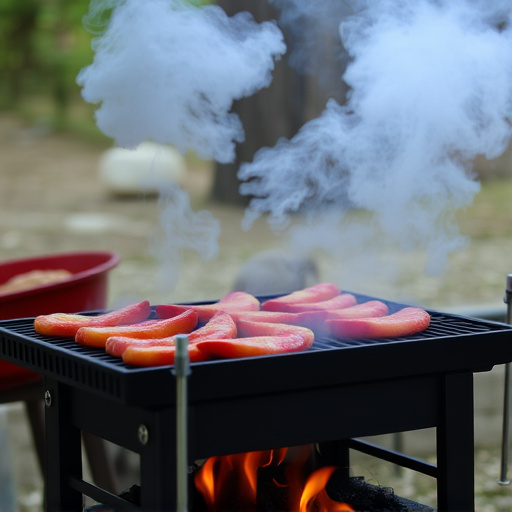
When it comes to achieving tender, fall-off-the-bone BBQ pork ribs, selecting the right cut is a crucial first step in your culinary journey. Opt for baby back ribs or spare ribs as they are the most popular choices for a reason—their marbling and structure lend themselves beautifully to slow cooking, allowing the meat to become incredibly tender. Baby back ribs, with their shorter bone structure and less fat, cook faster and result in a cleaner, slimmer cut. On the other hand, spare ribs offer a richer flavor profile due to higher fat content but require a bit more attention to ensure they don’t become too tough.
For the ultimate BBQ pork ribs recipe, consider starting with these cuts, as their natural marbling acts as a built-in moisture source during the slow-cooking process. This ensures that your ribs remain juicy and tender, providing an exceptional dining experience for any barbecue enthusiast.
Dry Brining: A Game Changer
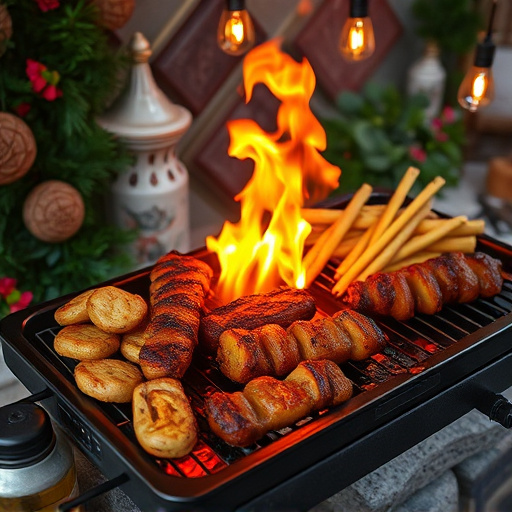
Dry brining is a game-changer when it comes to achieving tender, mouthwatering BBQ pork ribs in your recipe. This simple yet effective technique involves curing the meat with salt and spices before cooking, allowing for deeper flavors and incredibly tender results. By drawing out moisture and breaking down muscle fibers, dry brining enhances the overall texture and juiciness of the ribs.
It’s a process that requires patience, as the ribs need to be brined for several hours or even overnight. However, the payoff is well worth it. The salt and spice mixture not only season the meat but also act as a natural preservative, ensuring your BBQ pork ribs recipe stands out with its rich, complex taste and unparalleled tenderness.
The Magic of Slow Cooking

The art of achieving tender, mouthwatering BBQ pork ribs lies in the patience and precision of slow cooking. This method is a true game-changer when it comes to crafting the perfect rib recipe. By taking your time and allowing the meat to cook slowly over low heat, you’re essentially helping the collagen in the pork break down, resulting in incredibly tender and juicy ribs. It’s a process that requires minimal effort from you, as the oven or smoker does the heavy lifting, ensuring each rib is cooked evenly and thoroughly.
Slow cooking also allows for the flavorful smoke to penetrate deep into the meat, infusing it with a rich, smoky taste that’s hard to replicate any other way. This technique is especially valuable when preparing ribs because it enables you to achieve that coveted fall-off-the-bone texture while locking in moisture, making them irresistible to BBQ lovers. So, if you’re aiming for perfect, tender BBQ pork ribs, consider embracing the magic of slow cooking and letting the flavors meld together over time.
Sauces: Enhancing the Flavor Profile
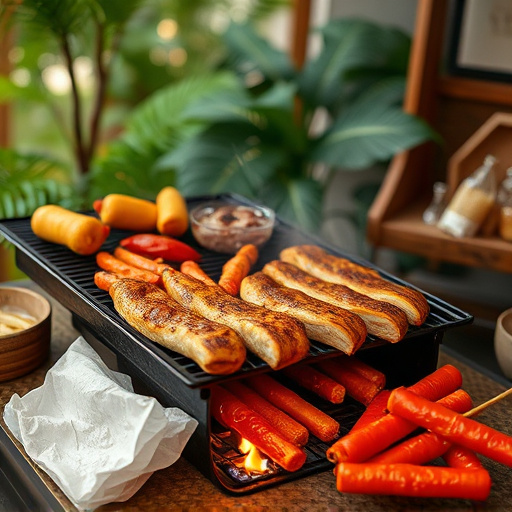
Sauces play a pivotal role in enhancing the flavor profile of BBQ pork ribs, elevating them from good to exceptional. Beyond the classic BBQ sauce, experiment with various options like tomato-based sauces infused with garlic and herbs, or a tangy apple cider vinegar glaze for a healthier twist. Each sauce contributes unique flavors that cling to the tender rib meat, creating an unforgettable culinary experience. Incorporating these variations not only satisfies diverse palates but also showcases your creativity in crafting the perfect BBQ pork ribs recipe.
Mastering the Finish: Grilling to Perfection
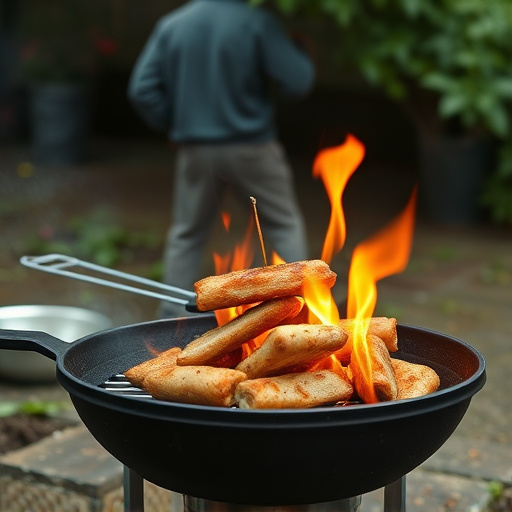
Achieving tender, mouthwatering BBQ pork ribs requires an artful blend of preparation and grilling technique. The final stage, often overlooked but crucial, is mastering the grill to ensure those ribs finish perfectly. It’s about understanding when to sear, caramelize, and let the slow-cooking process do its magic.
For a signature BBQ pork ribs recipe, preheat your grill to create direct and indirect heat zones. When the coals are hot, carefully place the ribs on the grill, aiming for a direct sear to lock in flavors. After searing both sides, move them to the cooler side of the grill to finish cooking slowly. This method ensures those ribs become tender, with a delightful charred exterior and succulent meat—the hallmark of any exceptional BBQ pork ribs recipe.
Resting: Letting the Meat Relax

After cooking your BBQ pork ribs to perfection, the next crucial step is resting. This resting period allows the juices to redistribute throughout the meat, ensuring every bite is tender and flavorful. During this time, the internal temperature of the ribs gradually decreases, allowing the collagen in the meat to reintegrate and transform into natural juices. For best results, let your ribs rest for at least 10-15 minutes before slicing or serving. This simple step can significantly enhance the overall quality of your BBQ pork ribs recipe.
Proper resting goes hand in hand with proper wrapping. After resting, gently wrap the ribs in foil or a clean kitchen towel to trap those juicy flavors inside. This not only keeps the ribs moist but also allows any remaining heat to finish cooking the meat slowly, ensuring every fiber is tenderized and ready for your eager taste buds.
